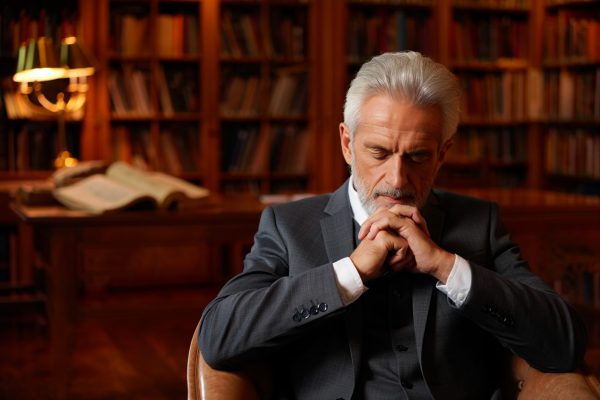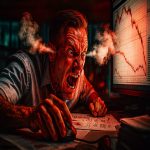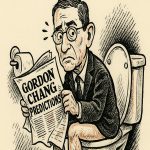The Herd’s Destruction: A Warning Against Fear-Driven Panic
Apr 22, 2025
“The stock market is filled with individuals who know the price of everything, but the value of nothing.” This timeless quote by Philip Fisher captures the essence of what we are about to dissect. Fear-driven herd mentality is not just a psychological phenomenon—it is a destructive force capable of wiping out trillions of dollars, destabilising economies, and leaving investors paralysed in its wake. The most dangerous moves in markets often start with collective panic, where logical thinking vs critical thinking becomes blurred, and emotion takes the wheel.
Imagine a crowded theatre. Someone shouts “fire,” and despite no visible evidence of flames, the stampede begins. In financial markets, the cry of fear is louder, amplified by social media, sensationalist headlines, and confirmation bias. People sell not because they understand the value of what they hold, but because they are terrified someone else will sell first. The result? Crippling losses, shattered portfolios, and opportunities missed. This essay dives deep into the battle between logic and critical thinking, exposing how those who master their emotions and think critically can not only survive but thrive in the chaos.
Exposing Market Panic: The Anatomy of Financial Fear
At the heart of every market panic lies a dangerous cocktail of cognitive biases, neurological wiring, and herd instinct. The human brain is a survival machine, evolved to prioritize safety over opportunity. When markets dip, fear activates the amygdala—the brain’s emotional core—triggering fight-or-flight responses that override rational thought. In these moments, logical thinking vs critical thinking becomes a battlefield, with emotion often prevailing over reason.
Take the 2008 financial crisis as a prime example. As Lehman Brothers collapsed and credit markets froze, investors scrambled to liquidate positions. The fear of systemic collapse turned into a self-fulfilling prophecy as selling begot selling. Those who could think critically, calmly analysing the underlying value of assets like Warren Buffett did, emerged stronger. Buffett famously invested in Goldman Sachs during the panic, leveraging the fear of others to secure a lucrative deal.
Another powerful illustration of herd mentality is the Dot-Com Bubble of the late 1990s. Investors, fueled by FOMO (fear of missing out), poured money into tech stocks with no earnings or sustainable business models. When the bubble burst, trillions were lost as panic selling ensued. The lesson? Fear-driven herd behavior magnifies losses, while disciplined critical thinkers position themselves to capitalize on irrationality.
Contrarian Mastery: Harnessing Fear as a Weapon
While the herd flees, the contrarian advances. History shows that the greatest investors don’t merely survive market panics—they exploit them. This requires not just logical thinking but a higher-order layer of critical thought: the ability to see opportunity where others see catastrophe.
Jesse Livermore, the legendary speculator, famously said, *”The big money is not in the buying or the selling, but in the waiting.”* Livermore’s contrarian mindset allowed him to profit massively during the market crashes of 1907 and 1929. He understood that markets are cyclical and that fear-driven selloffs create discounted opportunities for those who remain patient and analytical.
Similarly, Charlie Munger, Buffett’s right-hand man, emphasizes the importance of rationality during periods of extreme volatility. Munger once quipped, *”The big money is made in the waiting, not in the buying or the selling.”* What sets contrarians apart is their ability to act decisively while others dither. They don’t follow the crowd; they study its psychology and move against it.
It is in these moments of collective panic that logical thinking vs critical thinking is truly tested. Logical thinkers may recognize that prices are irrationally low, but it takes critical thinkers to assess the broader context, evaluate risk, and execute bold moves. The contrarian’s edge lies in their ability to think multi-dimensionally, factoring in not just price but sentiment, macroeconomic conditions, and historical patterns.
Fear-Exploiting Strategies: Turning Chaos into Opportunity
Contrarians don’t just rely on philosophy—they employ specific, actionable strategies to capitalize on market fear. One such strategy involves selling put options during volatility spikes. When markets panic, the implied volatility of options soars, causing premiums to inflate. Selling put options on quality stocks during these periods allows investors to collect significant income while positioning themselves to buy shares at discounted prices if assigned.
For example, during the COVID-19 market crash of March 2020, volatility (measured by the VIX) spiked to record levels. Savvy investors sold put options on blue-chip stocks like Apple and Microsoft, collecting inflated premiums. When markets recovered, these options expired worthless, allowing these investors to pocket substantial gains without ever having to buy the underlying shares.
Another advanced strategy involves reinvesting the premiums collected from selling puts into LEAPS (Long-Term Equity Anticipation Securities)—deeply out-of-the-money call options with long expiration dates. This approach creates asymmetric risk-reward opportunities, allowing investors to leverage small amounts of capital for potentially massive gains. By combining disciplined option selling with strategic reinvestment, critical thinkers can systematically harness market fear to build wealth.
The key to these strategies is meticulous planning and an unemotional approach. Logical thinking alone may identify opportunities, but critical thinking ensures precise execution. It’s not enough to recognize that fear creates value gaps; one must have the discipline and foresight to act decisively.
Disciplined Boldness: The Foundation of Success
Boldness without discipline is recklessness, just as caution without boldness is mediocrity. The most successful investors are those who combine daring moves with meticulous preparation. They don’t blindly buy into panic—they analyse, plan, and execute with precision.
Consider the words of Ray Dalio, founder of Bridgewater Associates: *”He who lives by the crystal ball will eat shattered glass.”* Dalio emphasizes that while markets are inherently unpredictable, disciplined systems and frameworks can help investors navigate uncertainty. This is the essence of critical thinking: the ability to balance logical analysis with flexibility and adaptability.
Discipline also extends to emotional control. In moments of extreme fear, the temptation to join the herd is overwhelming. But as Benjamin Graham, the father of value investing, noted, *”The investor’s chief problem—and even his worst enemy—is likely to be himself.”* Overcoming this inner conflict requires not only logical thinking but also the emotional resilience to think critically under pressure.
Successful investors cultivate boldness through rigorous preparation. They study historical market cycles, build diversified portfolios, and stress-test their strategies. They also know when to hold back, recognizing that patience is as much a part of boldness as decisive action. The disciplined investor doesn’t chase gains; they let opportunities come to them and strike when the odds are in their favor.
Visionary Empowerment: Escaping the Herd
The ultimate reward of mastering logical thinking vs critical thinking is not just financial success—it is intellectual autonomy. Escaping the herd mentality liberates investors from the fear and greed that dominate market behaviour. It allows them to think independently, act decisively, and build lasting wealth on their terms.
But this journey is not easy. It requires a willingness to embrace uncertainty, confront cognitive biases, and challenge conventional wisdom. It demands a mindset that sees opportunity in chaos and strength in volatility. Most importantly, it calls for a deep understanding of markets as complex, interconnected systems where paradox and contradiction coexist.
As we conclude this deep dive into logical thinking vs critical thinking, remember this: The greatest investors are not those who avoid risk but those who manage it intelligently. They are not afraid of fear; they use it as a tool to unlock opportunity. By thinking critically, you can rise above the noise, harness the power of the markets, and achieve financial and personal empowerment.
In the end, the choice is yours: Will you follow the herd into mediocrity, or will you seize the reins of your future with bold, disciplined, critical thinking?













